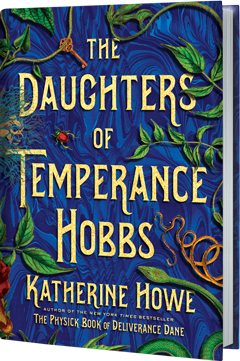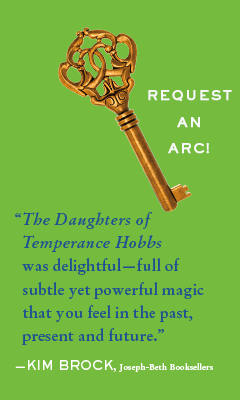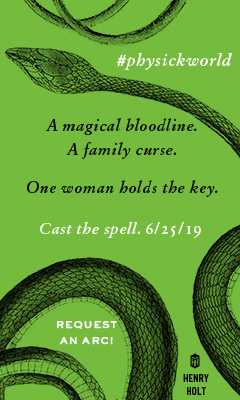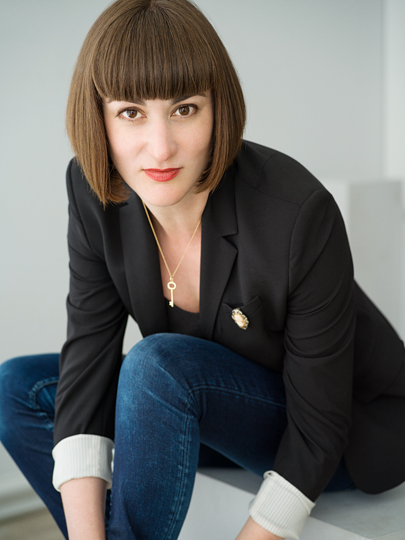The Daughters of Temperance Hobbs
by Katherine Howe
Ten years after the publication of The Physick Book of Deliverance Dane, Katherine Howe returns to her witchcraft specialist, Connie Goodwin, in another spellbinding adventure steeped in history, magic and suspense. As The Daughters of Temperance Hobbs opens, Connie is now a junior professor in Boston focused on securing tenure at her university. She has neither the time nor the energy for outside distractions, including disagreements with her significant other, Sam, over the status of their relationship. Mother Nature, however, laughs at Connie's plans: the ultra-driven career woman discovers she's pregnant.
The impending baby, combined with her teaching responsibilities and the work she must complete for tenure, would be overwhelming by itself, but Connie--the descendent of a woman hanged as a witch during the Salem Witch Trials--possesses supernatural abilities that come complete with a centuries-old family curse that puts Sam in grave danger. Connie's mother suggests ending their relationship, but Connie loves Sam. She's determined to break the curse, secure her job and have the baby: "Connie knew, with a certainty she had rarely felt in her life, that she could no more leave Sam than cut off her own leg.... She could fix this. She must." So Connie embarks on a research project of epic--and magical--proportions.
Howe's latest genre-bending novel doesn't require any knowledge of her previous books, but still provides fans of Physick Book an exciting and satisfying continuation of Connie's story. Her devoted readers will recognize returning characters, including Connie's mother, Grace, and her constant companion, a dog-like character named Arlo, who both assist Connie in the search for a mystical recipe that's been carefully buried for generations--one with the power to stamp out the evil threatening her family but also so dangerous it could just as easily destroy them.
New to Howe's cast and Connie's life is a spirited young graduate student, Esperanza "Zazi" Molina. Zazi's adviser at Harvard is leaving, stranding Zazi at a pivotal point in her dissertation process. Zazi's focus is on American colonial history, as well as folk religions of the South and Southwest, so Connie is the perfect teacher to guide Zazi through her graduate work. Reluctantly she agrees, guilted into mentoring the young woman because she herself was in a similar situation as a student. Zazi becomes something of a partner in Connie's pursuit of the spell.
Zazi, like the other characters in this fantastical adventure, is vibrant and smart. She complements Connie and adds an additional layer to the novel's striking themes surrounding women and their abilities to weather the storms of life--literally and figuratively.
As Howe recounts Connie and Zazi's exploits in 21st-century New England, she also tells the stories of Connie's ancestors from the 17th and 18th centuries, including a woman in a portrait that hangs in Connie's grandmother's house: "In the candlelight she could see a tiny nameplate in the peeling gilt-edge frame. Temperance Hobbs. A wasp-waisted, slope-shouldered girl, brown hair in ringlets over her ears, with a yellowish terrier-like animal tucked under her arm. Her dress had at one time been pale pink, but had yellowed with age and varnish. She wore an unreadable expression. Not quite a smile." The struggles of these early American women help drive the novel's suspense, while Howe's knowledge of history delivers an authenticity that serves to make the plot even more gripping.
With poetic artistry and powerful imagery, Howe evokes striking atmosphere. She wraps her reader in the protective environs of the Goodwin family cottage: "Under the canopy of vines, the Milk Street house garden was turning in its sleep and stretching, stirring its feet under the coverlet of spring." And she just as easily chills the blood with a scene at sea in 1661: "Around her, Livvy heard the groans and creaks of the hull's wooden plankings, and the wind screaming in the rigging. It sounded like a woman's screams, if a woman's screams could rise and fall without her taking a breath. Under the groans she heard soft weeping, and above her, on deck, the beating of feet and the shouts of men."
Howe's seamless blending of fantasy, history, suspense and romance--coupled with vivid characters, dynamic tone and a thrilling pace--result in a riveting novel. She has clearly unearthed the magic recipe for crafting superb fiction, and readers will reap the rewards. --Jen Forbus








